Sitecore SEO: The Ultimate Guide to SEO in 2025
Sitecore has become popular as a robust content management system. It is successful because it focuses on delivering personalized and relevant content to visitors.
However, creating great content alone isn’t enough to drive traffic to your Sitecore website – you also need to ensure it’s optimized for search engines.
Here is where SEO techniques and practices improve your website’s ranking in organic search results, particularly in Google searches.
By focusing on SEO, Implementing Sitecore SEO best practices, and utilizing powerful capabilities and optimization tools, you can enhance your search ranking and attract more traffic.
This article will cover important for SEO subjects:
Sitecore SEO Basics
First, let’s discuss some essential SEO guidelines that every Sitecore website owner should follow.
Set up Google Search Console
Google Search Console is a free tool provided by Google that is essential for tracking the performance of your website in Google organic search results. Setting up Google Search Console is easy and highly recommended for website owners who want to improve their website’s visibility in organic search.

Set up Bing Webmaster Tools
Bing Webmaster Tools is a free service. This tool enables website owners to keep track of and enhance their website’s performance—search engine rankings on Bing. Setting up Bing Webmaster Tools is simple, and I can offer you helpful information about your website’s performance.

Set up Google Analytics
Setting up Google Analytics is crucial to understanding how visitors interact with your content. To get started, sign up for a Google Analytics account and obtain a tracking code for your website.
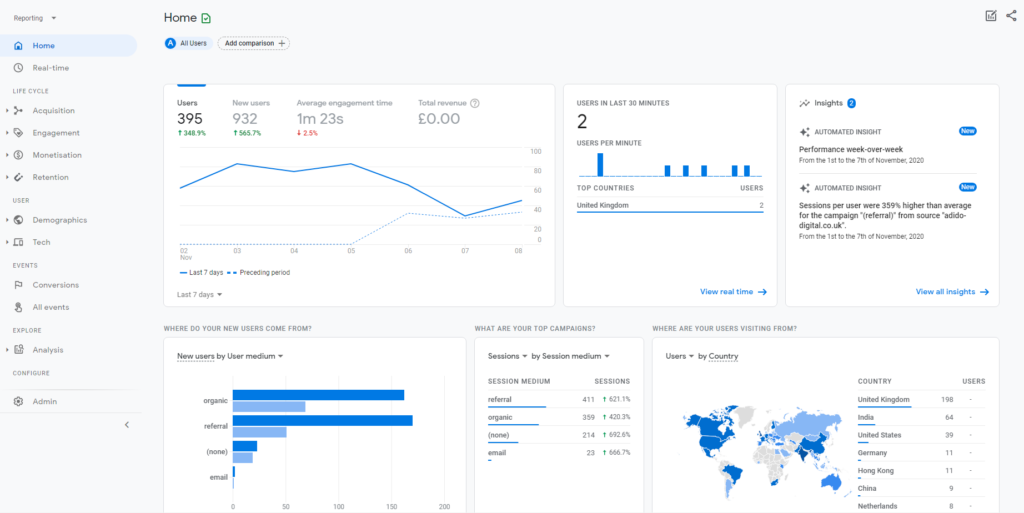
To start collecting analytics data, users have to insert the Google tracking code into their website.
Sitecore SXA users typically achieve this by including the out-of-the-box Google Analytics component in the Metadata partial design.
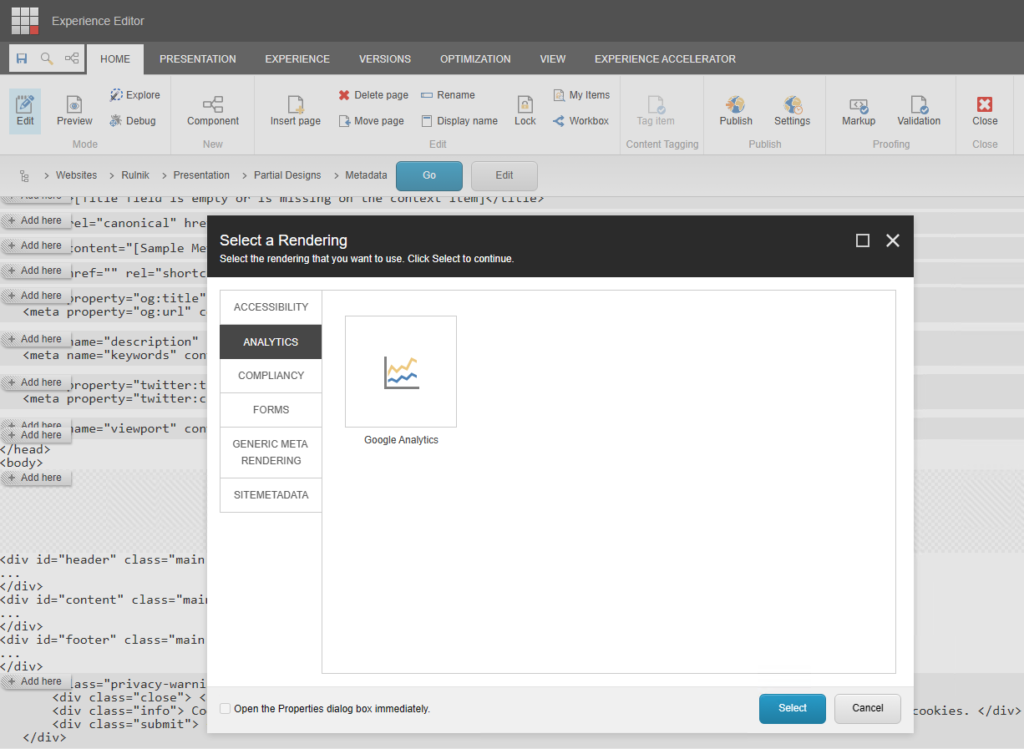
Create a Robots.txt File
A robots.txt file is a simple and essential tool for website owners to manage search engine bots accessing their websites.
The robots.txt file provides instructions to search engine crawlers regarding the pages on your site or sections of a website that should be crawled or not.
- To manually create a robots.txt file, simply use a plain text editor to edit the file and then save it in the root directory of your Sitecore website.
- To create a robots.txt file using Sitecore SXA, go to the site settings item and edit the robots section with relevant content.
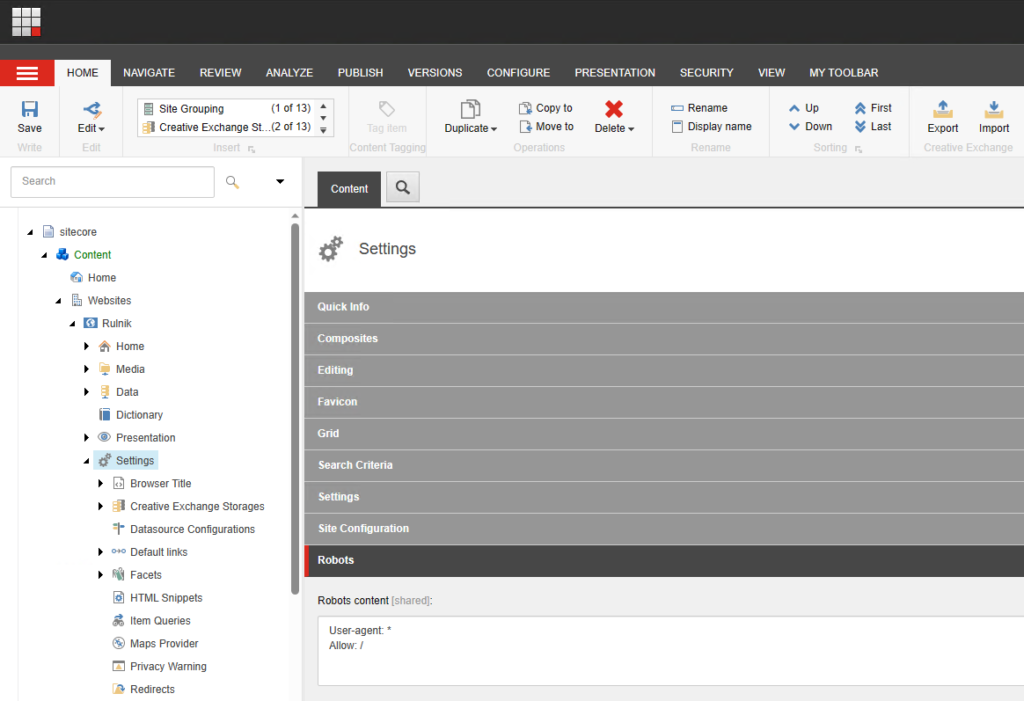
Create and Submit a Sitemap
A sitemap is a file in XML format that outlines the pages of a website and their structure.

This helps search engines to crawl and index the site’s content effectively.
There are two ways to create a sitemap: manually or by using tools that automatically generate them according to the sitemap protocol format.
After creating the XML sitemap, it’s important to submit it to major search engines such as Google and Bing. This can be done with Google Search Console and Bing Webmaster Tools.
Sitecore SXA generates and caches the sitemap file for the entire site in the root folder with the name sitemap.xml by default.
However, Sitecore allows you to configure the generation of this file on both the page and site levels.
If you need to adjust the change frequency and priority settings or remove a particular page from the sitemap file.
Navigate to the sitemap settings section of the page item and make the required changes there.
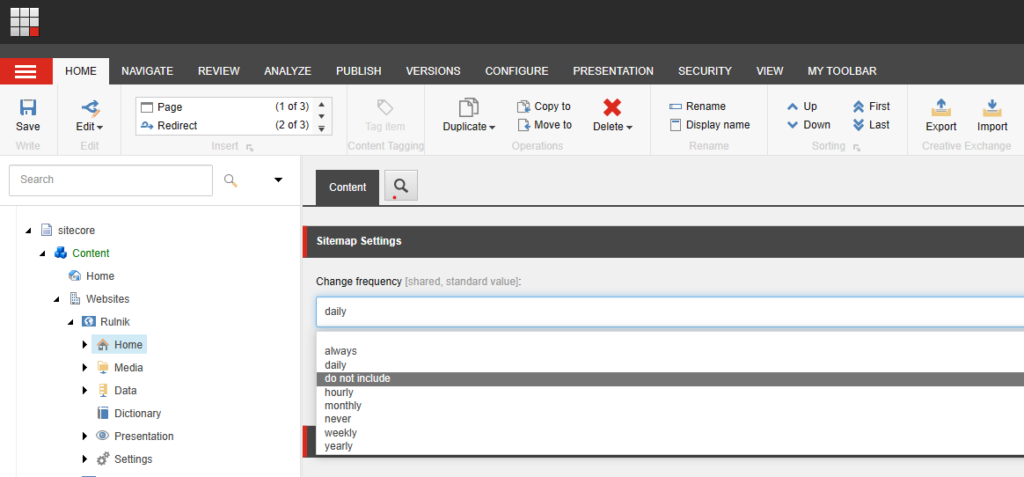
To modify the general sitemap settings, go to the site settings and select the sitemap item.
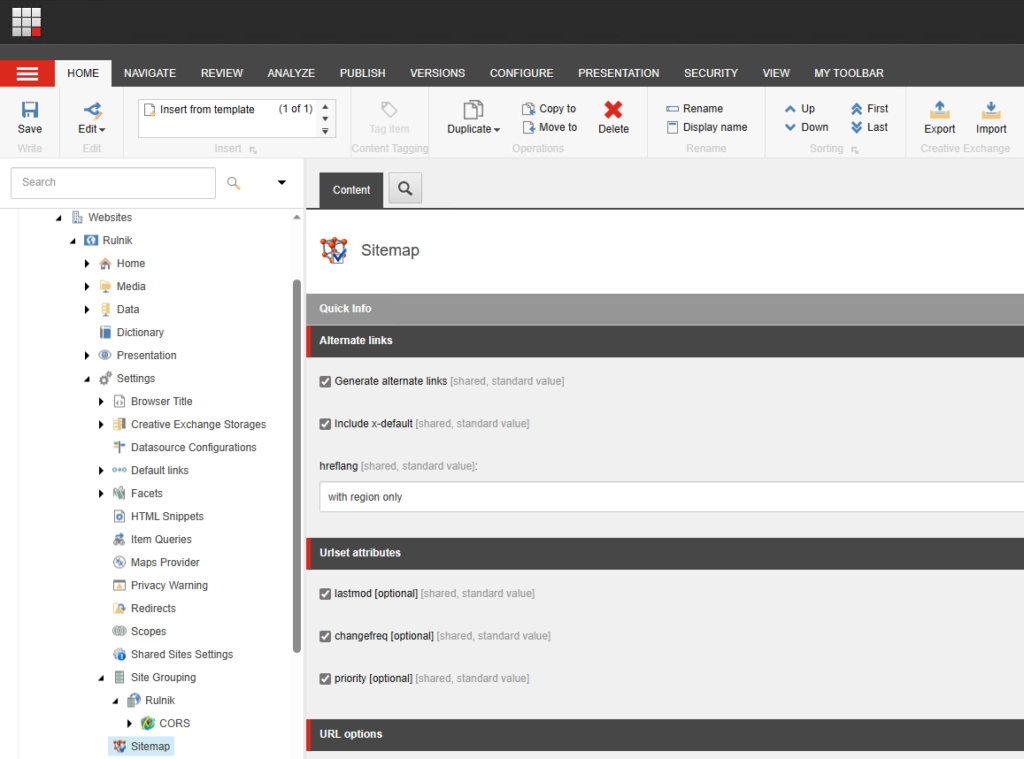
Sitecore Technical SEO
Optimizing websites for search engines like Google is known as Technical SEO. It’s critical to ensure your Sitecore website can be easily found, understood, and indexed by search engines to improve your website’s ranking.
Below are some essential technical best practices you should always consider.
Make sure search engines can easily access your website
Using Google Search Console, you can easily detect and address any problems related to crawling and indexing. Then, take the necessary steps to fix any errors you encounter.
The website has to be accessible through a single domain address only
Ensure that visitors cannot access your website pages on multiple URLs; it can lead to crawling, indexing, and security difficulties.
All duplicated addresses must be redirected (301 Moved Permanently) to the primary URL address.
For instance, in my case, all different URL variations redirected to my primary address – https://rulnik.com/

Use HTTPS for your Sitecore website
It’s critical to guarantee that your website uses HTTPS (Hypertext Transfer Protocol Secure) to protect visitors’ data, especially if it has web forms or requires users to submit payment information. Using HTTPS is mandatory in these cases.
Another reason to have HTTPS is that search engines use HTTPS as a ranking signal.
Verifying whether your website is secure and uses HTTPS is easy. Just check the URL bar of your browser.

Resolve any broken links and 404 errors
Having broken links and 404 errors may hurt the SEO of your website.
If you come across a broken link, edit the link to redirect it to the proper web page or remove not relevant and dead links from the site.
In some cases, when using internal linking, it may be necessary to redirect a URL to another to prevent 404 errors and inform search engines about the page’s new location. The 301 redirect is a helpful tool for this.
Sitecore offers several solutions for managing redirects. For example, you can install and use an open-source Sitecore redirect module or create your own custom 301 redirect module utilizing the power of Sitecore pipelines and processors.
Sitecore SXA simplifies the process even further. Navigate to site settings and use the mapping tool to config 302 and 301 redirects.
If you are confident that a URL redirect will be permanent, use 301 instead of 302 (temporary redirect).
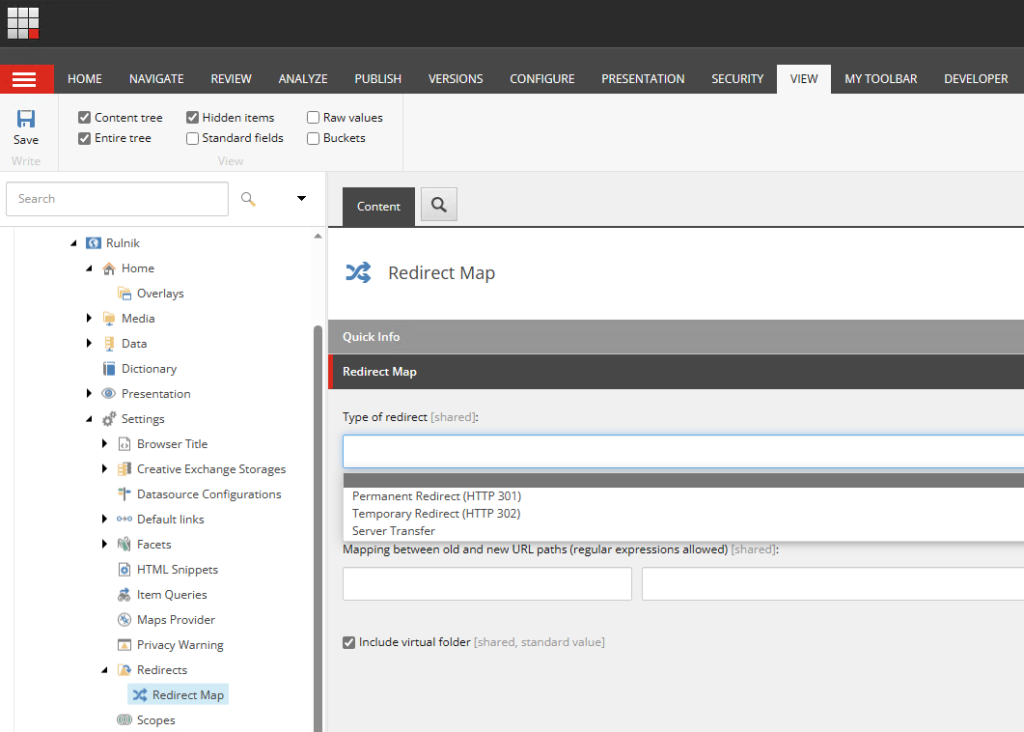
Improve SEO with Canonicalization
Implementing canonicalization is essential to avoid any negative impact on SEO caused by multiple URLs with the same content.
This will inform search engines and prevent them from getting confused when different URLs lead to identical content.
You can use the Google Search Console to keep track of the canonical URLs for your website on Google.
To resolve the issue of duplicate pages, adding a tag in the page header that refers to the canonical page is recommended.
<link rel=”canonical” href=”https://rulnik.com/my-canonical-page/”/>
When using Sitecore SXA, the canonical tag is automatically generated for each page.
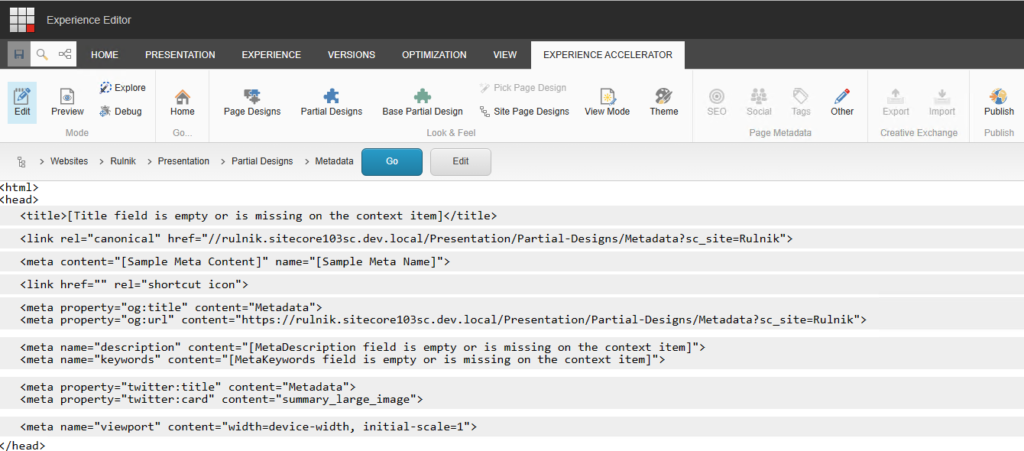
Ensure your Sitecore website has the best performance
Use tools like Google’s PageSpeed Insights tool to analyze page performance for desktop and mobile devices.
Slow site performance can have a negative impact on both user experience and your site’s search ranking.
If needed, involve Sitecore developers or infrastructure specialists to ensure your code is optimized for desktop and mobile devices and that the Sitecore instance performs as expected.

Here are some Sitecore performance-related tips:
- Infrastructure Optimization: Choosing the proper infrastructure for your Sitecore website is crucial for optimal performance
- Look into using HTTP/3: For faster connections, consider using the protocol HTTP/3. Learn more about what HTTP/3 is.
- Use CDN: Delivering static website assets from a Content Delivery Network (CDN) will improve website performance by reducing the distance between the user and the server and reducing server load.
- Use optimized images: Optimizing images in Sitecore involves resizing and compressing images to reduce their file size.
- Use modern image formats like WebP: Incorporate image optimizer like Dianoga on your Content Delivery server.
- Optimize content: Optimizing content, like minimizing the size of HTML blocks, can improve Sitecore’s performance.
- Use Best practices for front-end optimization: Use tools like Google PageSpeed Insight to identify front-end issues and get recommendations for fixing them.
- Enable JS and CSS compression: Enabling JS and CSS compression in Sitecore SXA is an out-of-the-box feature.
- Sitecore Caching: Sitecore supports various types of caching, including HTML caching, output caching, and data caching, which can be configured at different levels of your Sitecore environment to optimize website performance.
- Back-End Code Optimization: Reduce code complexity, remove unnecessary code, and optimize database queries to reduce the number of database calls required to deliver content
- Integrations optimization: Make sure that all integrations in your Sitecore instance are not affecting the site performance
- Use tools to monitor website performance: For instance, Sitecore Debug mode can help identify performance issues on the rendering level.
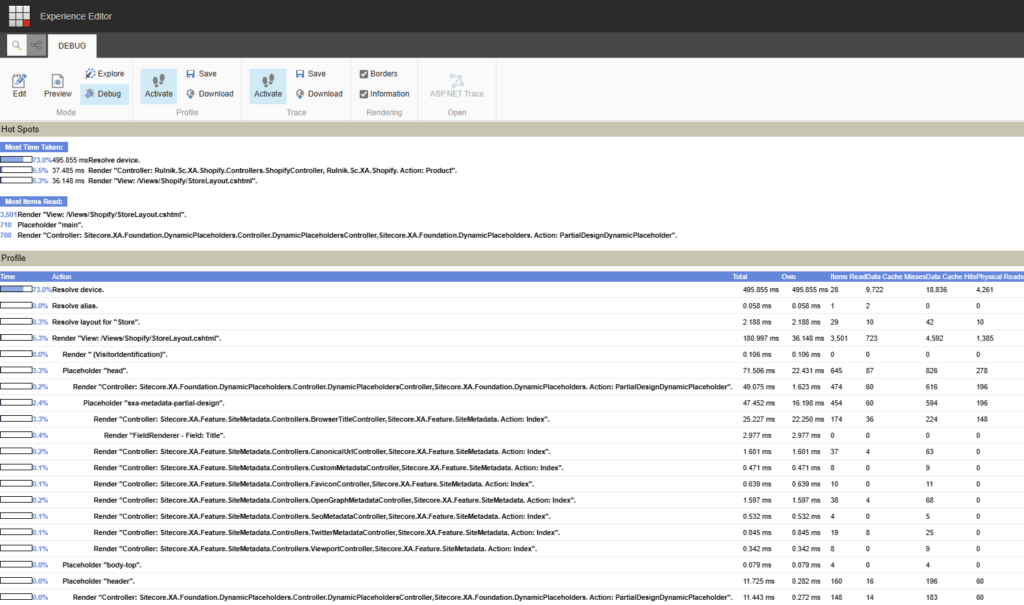
Make sure your Sitecore site is mobile-friendly
It’s essential to have a mobile-friendly website for better user experiences and for search engine smartphone agents to crawl and index your website for ranking purposes.
It is highly recommended to monitor and evaluate web pages to ensure that they meet the requirements of the new crawling method, mobile-first indexing.
Use helpful tools such as Google Mobile-Friendly Test or Google Search Console Tools to ensure your Sitecore website is optimized for mobile devices.
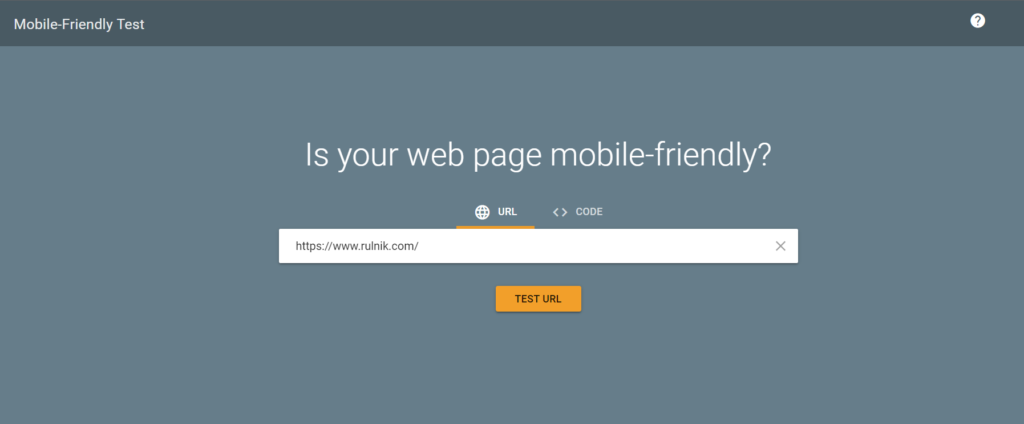
Sitecore On-Page SEO
On-page SEO refers to optimizing website pages to improve search engine ranking and visibility.
With Sitecore’s on-page SEO features, website owners can easily optimize their pages for search engines without technical expertise.
Optimize Website URLs for SEO
Create an SEO-friendly URL Structure of the site.
When creating URLs, it’s best to keep them short and descriptive while including relevant keywords.
Minimize the number of subfolders in your URL structure to make it easier to crawl your site by search engines.
In Sitecore, creating a well-organized content tree and giving descriptive names to content items is important to control the website’s URL structure.
Improve Title and Meta Description
Improving a web page’s meta title and description is an important aspect of on-page SEO. The title and meta description are two of the most visible on-page SEO elements of a search engine result, and they play a critical role in attracting visitors to click on a website link.
Both the meta title and description should be brief and to the point. The meta title should not exceed 60 characters, while the meta description should be limited to 155 characters.
When creating meta tags for a webpage, choosing relevant keywords that people will likely use when searching for information on the topic is important.
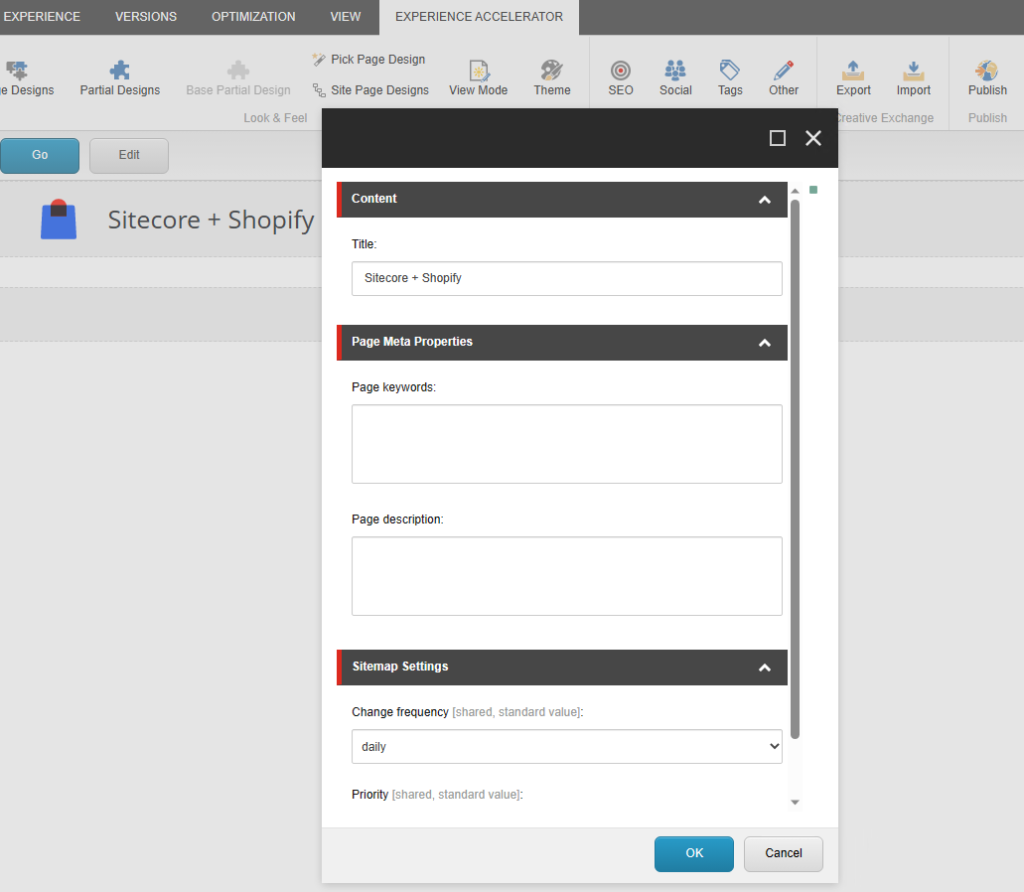
Use Headings for better organization and SEO
Headings such as H1 to H6 can create a clear organization for your content. In addition, breaking up your content into logical sections makes reading and understanding easier for website users.
Headings are crucial for SEO as they help search engines understand your content’s structure and your page’s relevance to specific search queries.
Including keywords in headers, especially in the main header H1 (title tag), is an essential aspect of on-page SEO.
Search engines use the main header to understand the page’s primary focus and determine its relevance to specific search queries.

Optimize Images for the Web
By optimizing images for SEO, websites can improve their search rankings and increase the visibility of their content in search results.
SEO for images involves using descriptive and relevant file names, alt tags, and captions to provide context and meaning to the picture.
It’s essential to use high-quality images that are correctly compressed to reduce page load times.
Additionally, adding images to an XML sitemap can help search engines find and index them more efficiently.

Improve your Sitecore Site’s Linking
Linking is a fundamental aspect of SEO. By including internal and external links on your website and using descriptive and relevant anchor text, you can help search engines understand your website’s structure and context, improve user experience, and build the authority and credibility of your website.
Use Sitecore Personalization for Better SEO
Personalization is crucial for improving your Sitecore SEO and engaging your audience.
Personalization can be used in various ways, from serving personalized content based on user demographics and interests to optimizing your website for local SEO with targeted keywords and location-specific content.
Sitecore provides robust functionality for personalization, and utilizing it effectively can significantly improve your SEO performance and drive conversions.
To learn more about Sitecore Personalization for SEO, continue reading.
FAQ
Here are some frequently asked Sitecore SEO-related questions:
Q: What is SEO in Sitecore?
A: SEO in Sitecore refers to the practices and techniques used to optimize a Sitecore website for search engines. This process includes on-page optimization: content optimization, meta tags, linking, and technical SEO: such as site speed, redirects, and code optimization.
Q: What are the most important Sitecore SEO features?
A: The most important Sitecore SEO features include easy content organization and optimization, meta tags, assets compression, sitemap.xml, robots.txt files generation, easy redirects, and caching for better performance.
Q: What are the common Sitecore SEO mistakes to avoid?
A: Some common Sitecore SEO mistakes to avoid include:
- Using duplicate content
- Using non-descriptive page titles and meta descriptions
- Using non-descriptive URLs
- Not optimizing images and videos for search engines
Q: How can I track and measure the SEO performance of my Sitecore website?
A: To track and measure the SEO performance of your Sitecore website, you can use various tools such as Google Search Console, Google Analytics, Sitecore Analytics, and third-party SEO tools.
Q: How does Sitecore handle duplicate content for SEO?
A: To handle duplicate content for SEO, Sitecore utilizes the canonical tag. This tag informs search engines which version of a page is considered the primary one.






